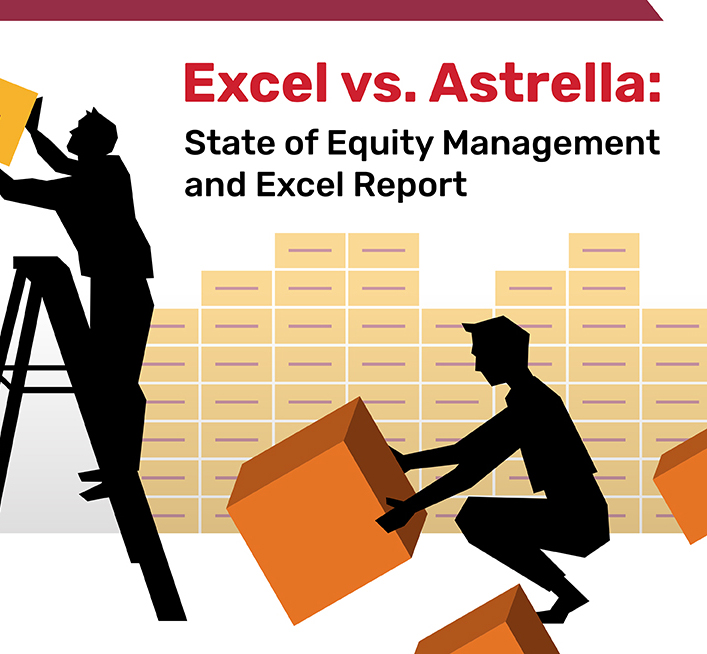Whether there’s a disagreement over the direction of the company or a desire to consolidate company ownership, there could be a number of reasons you would need to remove an investor from a cap table.
Removing an investor from a capitalization table can be a complex, sensitive process, involving negotiations with the investor, potential buy-back of shares, and ensuring legal requirements are met. The situation needs to be approached carefully and it’s best to seek expert advice to achieve a smooth, successful outcome. With such a complex process, you may be asking, “Exactly how do I remove an investor from a cap table?” In this article, we’ll cover the steps involved in removing an investor from your cap table as well as tips for navigating the process.
Knowing When to Remove an Investor
As stated previously, there could be a number of reasons you need to remove an investor from your cap table.
- Cleaning up the cap table to remove early investors: As your business grows and evolves, chances are the investors that started with you will not be with you once your company is larger. Early investors are usually angel investors who look for liquidity at a specific maturity level. An existing or new investor will often purchase the shares of the leaving investor, but many entities involved with the company will want the money to benefit the company rather than simply being exchanged between investors.
- Investor is unable to duly contribute: Whether it’s a personal situation that has come up or an angel investor is forced to recuse him or herself due to professional conflict, companies have the right of first offer to purchase the shares. In order to preserve cash, founders or management can also buy back the shares, but only if approved by the board.
- Disagreement between investor and entrepreneur: This is often the most difficult case of removal as it involves the hiring and firing of an investor. From the beginning, they’re basically like co-owners of the business, but when problems arise, you need to think of the company’s progress. To help, when bringing on investors, they should be offered founder shares that will keep ownership separate from having say in the board matters.
Review the Investment Agreement
Any time you need to remove an investor from a cap table, you need to first thoroughly review the investor agreement or signed contract when the investment was made. Look for any clauses that address investor removal, buyout clauses, or transfer of ownership. You may also find outstanding obligations the investor has to the company that needs to be addressed.
Pay close attention to sections dealing with investor rights and obligations, as well as provisions related to share transfer or ownership. There should be clauses that allow for investor removal from the cap table, such as those related to a breach of contract or failure to meet investment requirements. These clauses can provide you with a legal basis for removing the investor.
Any buyout clauses in the agreement may allow another party to purchase the leaving investor’s shares. If there is a buyout clause present, you can negotiate a buyout with the particular investor as a means of removing them from the cap table. Before they are removed, review the investor’s outstanding obligations to the company. This may include those related to funding or performance, such as meeting certain milestones or providing additional capital to the company.
For the most thorough review of the investment agreements, seek expert legal advice. A legal expert can help you determine the best course of action and ensure that all legal requirements are met on both sides so the process is carried out fairly and in an equitable manner.
Types of Investment Agreements
There are a variety of types of investment agreements. These are the most common agreements you will most likely find in your cap table:
- Stock Purchase Agreement: This one is simple, but involves quite a bit of documentation as it is for non-publicly traded investments.
- Non-Statutory Stock Option Agreement: Also referred to as a nonqualified stock option, this agreement usually appears when investments are sought by investors or workers within the company.
- Statutory Stock Option Agreement: Also known as an “incentive” or “qualified” stock option, this contract falls under the regulation of the IRS’ Code. Despite it’s strict requirements, it does offer great tax benefits, making it an appealing choice.
- Convertible Debt Agreement: This contract is known for its creativity, allowing investors to loan money to a company and be repaid later or gain ownership interest. These can include Convertible Notes, Convertible Promissory Notes, or SAFE Notes.
- Restricted Stock Agreement: Restricted stock contracts do not make it feasible for investors to gain ownership interest. Instead, investors are expected to dedicate time and effort toward maintaining existing interests.
- Deferred Compensation: Although not an outright investment type, a deferred compensation contract is viewed as an investment by employees as ownership or pay increases are anticipated in the future.
- Royalty, Commission, or Percent of Revenue: More for individuals not wishing to have ownership of the company itself; these contracts instead allow them to invest in the profits or products.
Negotiate a Buyout
When you’re negotiating a buyout of any ownership stake or equity stakes, it requires some tact. First and foremost, you need to come from a place of trust. Your investors should not be your enemies and, if they are, you shouldn’t take money from them in the first place. Their interests may differ from yours, but they want to see your business succeed just like you. Understanding that will help any negotiations be more constructive and beneficial when it’s over and you are still working together.
You also need to understand how to leverage what you have rather than giving investors whatever they want. If you have multiple investors interested, use that to show you have options while indicating your value. If you don’t have multiple investors interested, leverage other assets and discuss how your company is progressing but requires top talent to stay there.
During negotiations, keep an open mind so you don’t cause them to slow or stall. Look for any opportunities to listen or reach a middle ground, and if there’s anything you cannot budge on, consider why and if there’s a way to achieve the same outcome in a more agreeable way. Being touchy and keeping options narrow will end up putting you in a bad position with any future business partners.
During any negotiation, miscommunication can derail everything. Keep communication clear and at the end of discussions, summarize any key terms negotiated or decisions that have been made. Ask the investor if they are in alignment or need any clarification. Don’t worry about backtracking or going over points again because it’s better to achieve full understanding than create unnecessary obstacles at any point in the process.
Utilize Legal Tools & Provisions
Removing an investor can be a big business decision, and if the right legalities aren’t followed, you could come across a lot of problems. Consider using a lawyer or legal advisor during the removal process as they can help you determine if there are any state or federal laws you may be missing regarding the removal of an investor, plus examine the existing contract for any relevant clauses, such as a drag-along provision, tag-along clause, or shotgun provision.
If the existing contract includes a drag-along clause that allows a majority shareholder to force remaining minority shareholders to accept a third-party offer to purchase all company shares. Prospective buyers will want complete control of the business they’re purchasing, and this clause will help simplify the sale of the business to provide liquidity, flexibility, and a smoother exit route.
A tag-along clause protects minority shareholders by entitling them to sell shares for the same price and on the same terms as the majority shareholder that is selling.
A shotgun clause forces a shareholder to either sell their stake or buy out the other stakeholder, often seen as a last resort when a shareholder cannot settle a dispute or disagreement. Shotgun clauses are not usually ideal for minority shareholders as they’ll either need to buy out the majority shareholder or sell their business shares.
In any of these cases, an experienced lawyer can help you navigate the ins and outs of included clauses or provisions to ensure you’re following all necessary rules.
Communicate with Other Investors
Any time there are investment changes, this will affect your other investors, so it’s important to keep them informed of any proposed cap table changes. You’ll also need to be prepared to address any concerns or objections they may have.
Before making any cap table changes, sharing the cap table with investors and getting their approval is recommended. This will ensure your investors feel involved and valued, building more trust in the relationship, and knowing you will keep them informed.
Keep Your Cap Table Clean & Accurate with Management Software
In any startup, it’s essential to have a clean cap table in order to provide the most accurate information to investors. Keeping a clean and accurate cap table also ensures that in the event of investor removal, the information will be easy to view and disperse to other investors. Make cap table management simple with professional software like what is offered by Astrella.
Contact us today to request a demo.

Tom Kirby
Tom Kirby serves as the Head of Global Sales at Astrella. With more than 20 years of experience in sales and business development, he is dedicated to fostering strong client relationships and assisting both private and public companies in understanding and effectively communicating their value.
- Tom Kirby#molongui-disabled-link
- Tom Kirby#molongui-disabled-link
- Tom Kirby#molongui-disabled-link
- Tom Kirby#molongui-disabled-link
































































































































